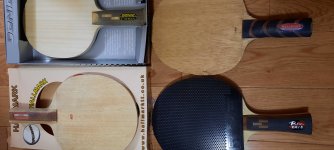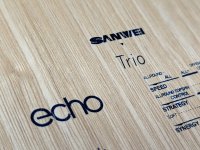This user has no status.
This user has no status.
Well-Known Member
There's so much focus on approved rubbers (needs to be on the LARC, glue, boosting not allowed etc) but the ITTF doesn't seem to care that much about blades other than the mandatory percentage of wood. Why is this?
Some Butterfly blades have got the JTTA stamp (maybe only vintage blades?) and most Stiga blades have got an SBTF stamp on them. Does this really have a meaning in Japan and Sweden or is it just a marketing gimmick?
(Sorry if this has been repeatedly answered but I'm failing to find any existing threads).
Some Butterfly blades have got the JTTA stamp (maybe only vintage blades?) and most Stiga blades have got an SBTF stamp on them. Does this really have a meaning in Japan and Sweden or is it just a marketing gimmick?
(Sorry if this has been repeatedly answered but I'm failing to find any existing threads).
Last edited:











